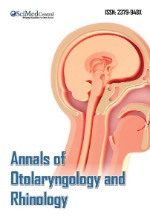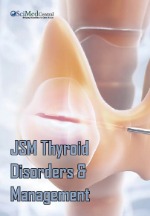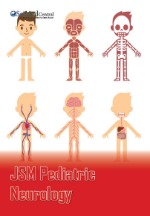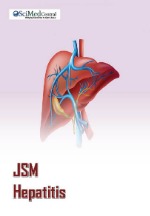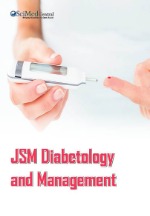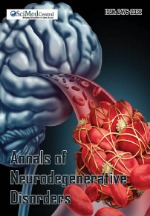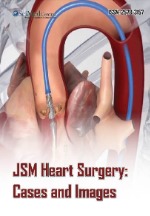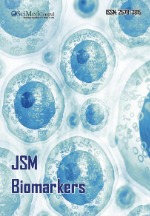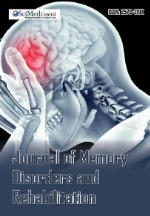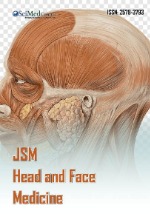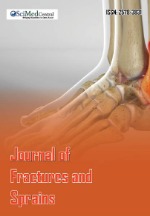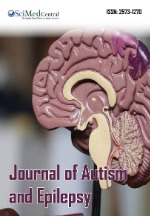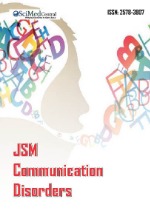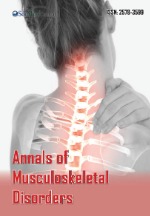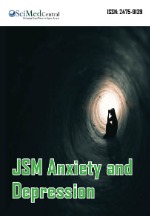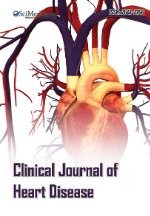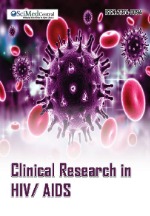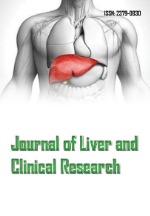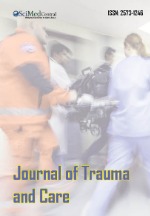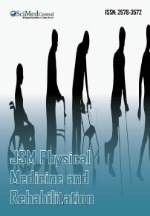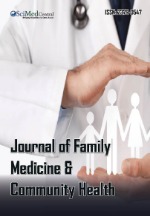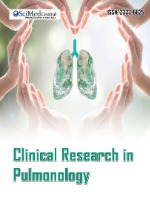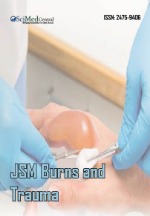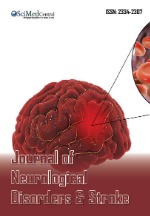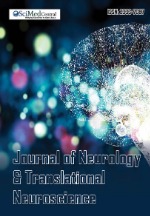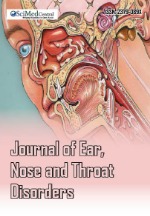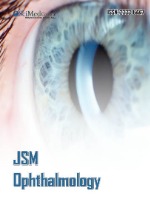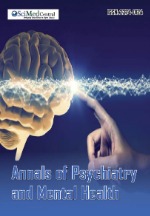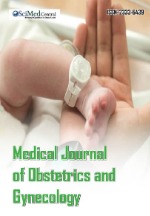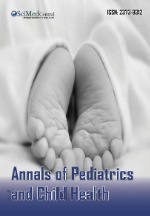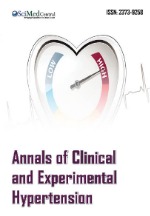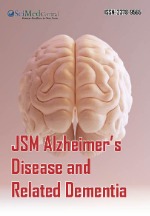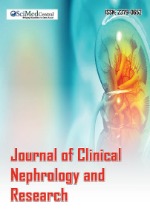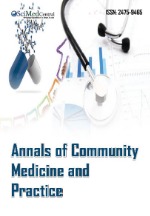The Great Value of Non-Verbal Communication to Assess Suicide Risk in a Patient with Schizophrenia
- 1. Department of Psychiatry, University of New Mexico, New Mexico, USA
- 2. Behavioral Health Careline, New Mexico VA Healthcare System, New Mexico, USA
Abstract
This is a case report of a patient with schizophrenia being evaluated in outpatient clinic for regular follow up appointment. The patient was found not adherent with his medication. The providers noticed while screening for suicide a change from his baseline in non-verbal communication. This change in non-verbal communication raised concerns about patient’s safety, led the providers to hospitalize the patient, and may have saved his life.
The authors describe the importance of non-verbal communications in both patient and providers. Communication with patients with schizophrenia can be challenging, particularly to clinicians that do not have experience with this population. Severity of schizophrenia and particularly, negative symptoms are associated with less pro-social behaviors, which may diminish verbalization of suicidal ideation. Therefore, clinicians need to be familiar with the patient’s baseline non-verbal communication and be alert of any changes. Patients that want to commit suicide may not verbalize this to their providers, in this case, non-verbal communication may be critical and good reading to this might save a patient’s life.
Keywords
• Nonverbal communciations
• Schizophrenia
• Suicide
• Body language
Citation
Muhammad L, Villarreal G (2017) The Great Value of Non-verbal Communication to Assess Suicide Risk in a Patient with Schizophrenia. J Behav 2(1): 1003
INTRODUCTION
Verbal communication is the use of sounds and words to express ourselves. Nonverbal communication between people is communication through sending and receiving wordless clues. According to professor Albert Mehrabian studies, body language accounts for 55% of communications, 38% comes from tone of voice, 7% comes from our actual words [1].
People with schizophrenia have two main type of symptoms: 1) Positive symptoms including delusions and hallucinations. 2) Negative symptoms: This includes social withdrawal, emotional blunting, loss of motivation, self-neglect, and paucity of speech. As we see all these negative symptoms can significantly affect patient's nonverbal communications [2].
People with schizophrenia are known to die much earlier than expected. Up to 40% of this excess premature mortality can be attributed to suicide and other unnatural deaths [3].
Communication with patients with schizophrenia can be challenging due to a number of factors. It has been shown that severity of illness and, in particular, negative symptoms are associated with less pro-social behaviors in these patients [2]. Since prosocial behaviors improve communication, deficits in patients with schizophrenia likely impair communication. Therefore, clinicians need to be very alert to non-verbal cues displayed by these patients (prosody, body language) and monitor any changes from baseline.
Patients with schizophrenia that want to commit suicide may not verbalize this to their providers. Therefore, when suicidality is being evaluated, non-verbal communication may be critical. In particular, increased avoidance behaviors could alert clinicians of non-verbalized suicidal ideation and good reading of this might save a patient’s life.
On other hand clinician’s good nonverbal communications skills are associated with higher patient satisfaction and better therapeutic alliance in patients with schizophrenia.
MATERIALS AND METHODS
The authors describe a case that underlines the importance of noticing changes in non-verbal communication while evaluating suicidality in patients with schizophrenia in outpatient clinics. This case highlights the importance of paying attention to the patient’s baseline nonverbal communications and having a heightened awareness of any changes in these baseline behaviors.
CASE PRESENTATION
The patient was a 25-year-old single male with diagnosis of schizophrenia and substance abuse disorder in remission. He had been seen at an outpatient psychiatric clinic for two years. Since the patient was mostly non-adherent to his medications, his mother was appointed as treatment guardian.
The patient took antipsychotic medication for a period of time, this allowed the providers to get to know him well and be able to assess his usual non-verbal communication style. He was in general friendly with providers, had good eye contact, and shook hands before and after the interview. He had been tried on haloperidol and then aripiprazole and did not seem to have side effects to these medications. At one point, however, the patient stopped them as he thought he did not need the medications.
The patient had 5 previous psychiatric hospitalizations and one serious suicide attempt two years before in which he self-inflicted a stab wound to the anterior neck resulting in a zone 2 injury requiring emergent anterior neck exploration and admission to the Trauma Service.
The patient had no other medical problems. He lived at home with his mother and was not involved in a relationship. He denied any access to any kind of weapons (mother confirmed this).
One day and in regular follow up appointment the patient came in with his mother and was interviewed by himself then with his mother. He agreed to be started on Aripiprazole 5 mg/day, it was the first time the patient was willing to be on medications. While screening for suicide, he denied any suicide ideations and stated he wanted to be better and start a new life, start a psychiatric rehabilitation program and find a job. However, the patient’s nonverbal communications were saying something very different. We noted a change from his baseline non-verbal behaviors. His prosody was different (including duration, intensity and pitch of speech), he was guarded (looked like he is cautious and having possible reservations) while speaking about his future, his posture changed from being open (sitting with little open legs, and open arms) to be closed (arms and legs crossed), he also lost eye contact for a while before he started to talk about his future.
After noticing the change in non-verbal behaviors we were concerned about non-verbalized suicidal thoughts since he had a history of a serious suicide attempt. We recommended admission to the hospital for safety and to restart anti-psychotic medication, but he refused. The patient’s mother was interviewed, she reported that the patient was doing fine and she has no concerns about his safety. She agreed to monitor the patient until the following appointment and report any concerns to the providers. Patient did not meet criteria for involuntary hospitalization, therefore he was sent home with his mother with an aripiprazole prescription and a one-week follow-up appointment.
At the next appointment, patient first said he was “doing fine”, that was taking his medications and sleeping well, trying to get out of the house more. Again the patient’s prosody was different.
When we asked about suicidality, he initially denied it, however again looked guarded, his tone of voice changed (change in prosody again) and had increased eye blinking. He appeared nervous, fidgety, and kept rubbing his nose.
At that moment the provider made a supportive statement, told the patient in a very empathic way to relax and think about a photo of a cat on the wall. The patient laughed at the beginning and then started to look more relaxed, when asked to speak about what he thought about life, patient started to talk about the “end of the world.”
With more supportive non-verbal cues from provider (calm statements, supportive tone, and open ended questions) the patient started to look more comfortable, started to have more eye contacts and said was planning to kill himself “I am trying to get money so I can go to the shooting range and shoot myself, I did big goggle search and I found the 100% percent sure way to kill me if I shoot myself in the corner of the eye.”
Patient further acknowledged he was already trying to get money to fulfill his plan. Again, provider made sure to keep good non-judgmental nonverbal communications and in very empathic way with low tone of voice asked to elaborate.
The patient started to talk more about his religious beliefs and stated “the world is going to end soon and I do not want to participate in that, “I am in sin and this will not go away until l kill myself". The patient also said he felt afraid on the streets and said, “people are mean and they might harm me, I do not know why people are mean, I do not want to participate in that". He denied having auditory or visual hallucinations, homicidal ideation, depressed mood, guilt feelings or problems with sleep.
Psychiatric hospitalization was recommended for safety in very empathic way and the patient agreed. Mother also agreed and reported that patient was asking for money continuously as he has “a plan for something”. She said that patient looked calmer recently “as if he is in his own world”.
While in inpatient he was started on Aripiprazole depot injection. The patient started to improve with medication and behavioral therapy while inpatient, suicidal thoughts stopped and he started to be more engaged with doctors and staff.
After discharge he continued to follow up with our outpatient clinic, he was trying to find a job and accepted a referral to psychiatric rehabilitation program. No more suicide ideations were found and it was noted that patient’s nonverbal communication returned to its baseline. He again would sit more comfortable and relaxed, and had his baseline eye contact. We also noticed a return of his usual speech prosody, raising his pitch at the end of yes or no questions, and lowering it at the end of declarative sentences.
The patient’s psychosis was well controlled with the aripiprazole injection and had no further suicidality. In his last visit with us and before we transferred him to the long injectable clinic, patient stated that we saved his life and added that he felt that we care about him and this played huge part in his improvement.
DISCUSSION
Schizophrenia is one of the most serious and disabling of all mental illnesses. The name schizophrenia derives from the early observation that the illness is typified by “the disconnection or splitting of the psychic functions”. No other disorder arouses as much anxiety in the general public, patients and caregivers [2]. Symptoms of schizophrenia typically include: 1) Positive symptoms: Hallucinations, lack of insight, delusions, thought disorder. 2) Negative symptoms: Social withdrawal, emotional blunting, loss of motivation, self-neglect, and paucity of speech [2].
As it has for decades, suicide remains one of the leading causes of death in the western world. According to WHO estimates for the year 2020, approximately 1.53 million people will die from suicide; and ten to 20 times more people will attempt suicide worldwide [4].
People with schizophrenia are known to die much earlier than expected. Up to 40% of this excess premature mortality can be attributed to suicide and unnatural deaths, with one authoritative review estimating a lifetime suicide risk of 4.9% for people with schizophrenia [3].
Communication with patients with schizophrenia can be challenging, particularly to clinicians that do not have experience with this population. As we saw in this case, non-verbal communication can be critical to assess suicide risk in patients with schizophrenia.
Verbal communication is the use of sounds and words to express ourselves. Verbal communication involves sending and receiving information through language. It is a relatively recent development in evolutionary history and specific to the human species. Early humans likely relied heavily on non-verbal communication, as it is highly prevalent in primitive societies all over the world [1].
According to studies professor Albert Mehrabian, body language accounts for 55% of communications, 38% comes from tone of voice, 7% comes from our actual words [1].
Non-verbal communication between people involves sending and receiving information through wordless clues. Non-verbal communication includes many elements like:
1) Kinesics: This term is derived from the root word kinesis, which means “movement,” and refers to the study of hand, arm, body, and face movements. Specifically: gestures, head movements and posture, eye contact, and facial expressions as non-verbal communication.
One kinesic behavior, the open body position has been associated with greater immediacy and approachability, open arm and leg positions create positive attitudes in receivers. Gestures are arm and hand movements and include adaptors like clicking a pen or scratching the face. Head movements such as nodding can indicate agreement, disagreement, and interest, among other things. Posture can indicate assertiveness, defensiveness, interest, readiness, or intimidation, among other things. Eye contact is studied under the category of oculesics and specifically refers to eye contact with another person’s face, head, and eyes and the patterns of looking away and back at the other person during interaction. Facial expressions refer to the use of the forehead, brow, and facial muscles around the nose and mouth to convey meaning [1,5].
Facial expressions might be limited in patients with schizophrenia who may have blunt effect. So it is very important to observe patient baseline of facial expressions and be able to notice any difference, this can be said about eye contact as well. Postures and head movement should also have been observed and not neglected in all mental ill patients especially those with schizophrenia.
2) Proxemics: This refers to the study of how space and distance influence communication. There are four zones that constitute the personal space: the public zone (12 or more feet from our body), social zone (4–12 feet from our body), the personal zone (1.5–4 feet from our body), and the intimate zone (from body contact to 1.5 feet away [1,6]. It is always important monitor the patient’s proxemics with providers and with their families, and to be able to notice any change.
3) Vocalics: Is the study of paralanguage, which includes the vocal qualities that go along with verbal messages, such as pitch, volume, rate, vocal quality, and verbal fillers [1,7]. The same we can say about noticing patient average pitch, volume, rate, vocal quality and be able to notice the difference.
The term prosody refers to features of speech, including duration, intensity and pitch.
It can be divided to emotional prosody and linguistic prosody. The emotional prosody transfers emotions (ex: happiness, sadness), which clarify the emotional content of the speech. The linguistic prosody affects the meaning; it reflects the way in which the speaker structures information according to the knowledge they assign to his/her speech.
It has been found that patients with schizophrenia often display impaired social cognition, including communication disruptions and lack of use of prosodic phrasing to encode contrastive status of target nouns [8]. Therefore, it is very important that clinicians to notice any change in patient’s baseline prosody.
4) Haptics: This refers to the study of communication by touch. There are several types of touch; including functional-professional, social-polite, friendship-warmth, love-intimacy, and sexual-arousal touch [9]. This can be monitored by shaking hands with patients at every visit.
Non-verbal behavior contributes significantly to all interpersonal communication but unfortunately is often only a peripheral area of focus in the psychotherapeutic setting and there is little explicit training in this area. While listening carefully to our patient is obviously a fundamental aspect of psychotherapy, there may be additional diagnostic and therapeutic information to be gained by being aware of non-verbal behaviors expressed by a patient.
A verbal statement of suicidal intent has less value especially if there is strong suicide intent and the patient does not want the provider to stop his/her plan. To facilitate more accurate suicide risk assessment, the non-verbal components of patient behavior must be addressed [10]. In a study on 21 patients with schizophrenia and compared to a healthy control group, it was found that both patients and healthy groups base their decisions primarily on non-verbal information. However, patients tend to base their decisions less on non-verbal signals and more on verbal information than healthy controls [11].
Severity of schizophrenia and particularly, negative symptoms are associated with less pro-social behaviors [12]. Flatness of affect is common in schizophrenia (66%) [2]. For this reason it is important to pay attention to non-verbal cues such as tone of voice and whole body movements, especially feet, legs and hands.
Patients who want to commit suicide particularly those with schizophrenia may not verbalize these to their providers, in this cases. For this reason, non-verbal communication plays a very important role in high risk patients and a good reading of this might save a patient’s life. Suicide risk prediction is known to be imprecise [3]. Our case suggests that carefully reading non-verbal cues has important risk prediction value.
A study investigated the clinical and empirical significance of verbalizations of suicidal ideas and found there is no clear evidence that verbal communication, final acts, and previous suicide attempts are justifiably labeled together as ways of communicating suicidal intent [13].
Clinicians should be aware of how important non-verbal communication is and target improving their reading non-verbal communication of patients appropriately to reduce suicide risk in high-risk patients, particularly those with schizophrenia. Non-verbal communication could provide useful information pertaining to the overall mood and suicidal intent of the person even if the patient does not verbally disclose his/her intentions.
It is also very important to clinicians to pay more attention to their own nonverbal reactions, as these could potentially affect the effective communication. Non-verbal behavior of the physician is related to higher patient satisfaction [14,15].
CONCLUSION
We discussed a case of a patient with schizophrenia in which we utilized changes in his non-verbal communication to evaluate suicide ideation. Non-verbal communication is particularly important when assessing suicidality in patients with schizophrenia. It has been shown that a significant proportion of schizophrenia patients, particularly those with more severe negative symptoms show more avoidant, less pro-social behaviors; therefore, they are less likely to verbalize suicidal ideation. Therefore, clinicians need to be alert to changes in the patient’s non-verbal communications from baseline as well their own non-verbal cues when assessing suicide risk in patients with schizophrenia.
DISCLOSURE
The authors declare no conflicts of interest.
About the Corresponding Author
Dr. Lama Muhammad MD
Summary of background:
Board certified in dermatology and Venereal diseases. She completed preliminary Internal Medicine training. Currently she is chief resident in the psychiatric department of university of New Mexico.
She is interested in psychosomatic medicine and nonverbal communications.
Current research focus:
• Psychosomatic medicine
• Nonverbal communications
• Psychotherapy
Permanent e-mail address: LMuhammad@salud.unm.edu


